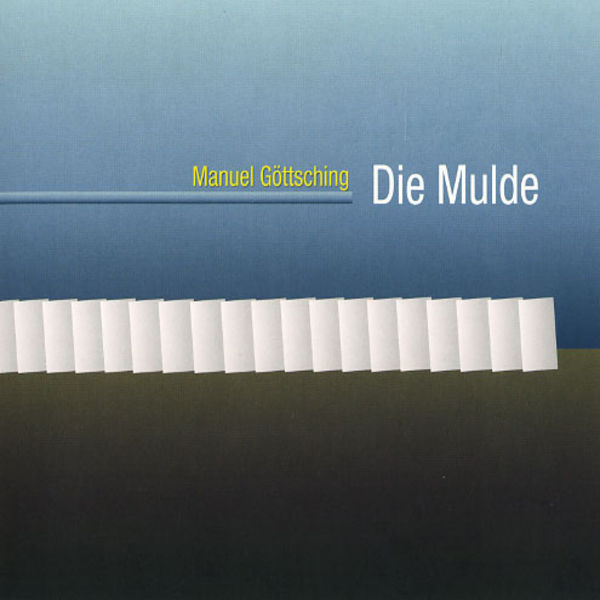
Exposé Online
What's old
Exposé print issues (1993-2011)
- 1 (October 1993)
- 2 (February 1994)
- 3 (May 1994)
- 4 (August 1994)
- 5 (October 1994)
- 6 (March 1995)
- 7 (July 1995)
- 8 (November 1995)
- 9 (March 1996)
- 10 (August 1996)
- 11 (February 1997)
- 12 (May 1997)
- 13 (October 1997)
- 14 (February 1998)
- 15 (July 1998)
- 16 (January 1999)
- 17 (April 1999)
- 18 (November 1999)
- 19 (May 2000)
- 20 (October 2000)
- 21 (March 2001)
- 22 (July 2001)
- 23 (December 2001)
- 24 (April 2002)
- 25 (September 2002)
- 26 (February 2003)
- 27 (August 2003)
- 28 (December 2003)
- 29 (April 2004)
- 30 (September 2004)
- 31 (March 2005)
- 32 (September 2005)
- 33 (May 2006)
- 34 (March 2007)
- 35 (January 2008)
- 36 (October 2008)
- 37 (July 2009)
- 38 (July 2010)
- 39 (Summer 2011)
Reviews
Manuel Göttsching — Die Mulde
(MG.ART 301, 1997/2005, CD)
Manuel Göttsching — Concert for Murnau
(MG.ART 302, 2003/2005, CD)
Manuel Göttsching — E2-E4 Live
(MG.ART 303, 2005, CD+DVD)
by Henry Schneider, Published 2006-05-01



As 2005 neared its end, Manuel Göttsching released three new CDs: Die Mulde, Concert for Murnau and E2-E4 Live. Die Mulde is a composition Manuel recorded September 6, 1997 for an art installation at the Denkmalschmiede Höfgen, close to the river Mulde. The CD contains the title track plus “hp little cry” recorded in 2004. Concert for Murnau is Manuel’s foray into semi-classical music and was performed live to the silent film Schloss Vogelöd (The Haunted Castle) by F. W. Murnau October 31 – November 1, 2003 at the Stattstheater Braunschweig, Kleines Haus, Germany. And of course, E2-E4 Live is a live recording of Manuel’s 1989 studio release at the Volksbühne am Rosa-Luxemburg Platz, Berlin on March 25, 2005.
In my opinion, Die Mulde is by far the best of the lot. It clearly shows the influence of his long time friend and musical colleague Klaus Schulze. It is pure electronic bliss. “Die Mulde” consists of four movements that flow seamlessly from one to the next, just like a river, and clocks in at 40:05. This is soothing, floating music and if Manuel’s guitar is present, it is certainly way down in the mix of arpeggios, keyboards, and electronics. Near the end of “Die Mulde”, it begins to sound more like Manuel’s music from the same time. “hp little cry” has an entirely different feel to it. Manuel recorded the background ambient electronics in 1981 and added guitar in 2004. It is 32 minutes of quiet, guitar tinklings layered over washes of drifting electronic chords. Gone are the days of his fiery guitar jams.
In contrast is Concert for Murnau. This release contains 12 tracks that range in duration from under a minute to almost 10 minutes. This CD is a combination of electronics and classical music. Some tracks are a combination of the two genres, others are either pure electronics or pure acoustic strings and horns. The music is a bit uneven. For me, the electronic pieces and the combination pieces work best. Some of the classical pieces sound a bit forced, and since Manuel is not noted for composing this type of music, they tend to be a bit long in exploring some simple motifs. These types of variations and experiments are much better suited for synths. As the Concert for Murnau was composed as a film score, perhaps it works better when the listener can also enjoy it with the visual experience of the horror film. The electronic pieces do offset the weaknesses of the classical pieces, but Concert for Murnau is not the recording to start with for a novice, it is more for the Göttsching completist.
Lastly, there is E2-E4 Live, which also happens to be the shortest Göttsching release in years. It is only 21:11 long, which is a blessing for E2-E4. The original studio recording was 59:20 and got a bit monotonous if you were to concentrate on the music. This live recording from earlier this year still communicates all of Manuel’s original musical ideas, but with new instrumentation in a shorter version that will keep you entertained.
Overall, we are very lucky to have this much new Göttsching music in 2005, which shows that he continues to be contributor in the ever growing amount of music available today.
Filed under: New releases, Issue 33, 2005 releases, 1997 recordings, 2003 recordings
Related artist(s): Manuel Göttsching
What's new
These are the most recent changes made to artists, releases, and articles.
- Review: Earthbound - Earthbound
Published 2025-12-28 - Review: Olgoj - A Place to Rest
Published 2025-12-27 - Release: John Weider - John Weider
Updated 2025-12-26 19:13:54 - Artist: John Weider
Updated 2025-12-26 19:09:52 - Release: Moonrider - Moonrider
Updated 2025-12-26 18:51:45 - Artist: Moonrider
Updated 2025-12-26 18:49:51 - Release: Octopus Syng - Insanity Is the Song We Sing
Updated 2025-12-26 12:53:35 - Release: Tre Spiritus - Tre Spiritus
Updated 2025-12-26 12:49:13 - Artist: Tre Spiritus
Updated 2025-12-26 12:48:34 - Release: Arpia - Festa Grande
Updated 2025-12-26 12:42:27 - Release: Sigmund Freud - Risveglio
Updated 2025-12-26 12:37:54 - Artist: Sigmund Freud
Updated 2025-12-26 12:37:08 - Release: Davide Cedolin - Ligurian Pastoral, Vol II
Updated 2025-12-26 00:17:38 - Release: Davide Cedolin - Ligurian Pastoral
Updated 2025-12-26 00:15:05 - Artist: Davide Cedolin
Updated 2025-12-26 00:12:01 - Review: Kokkinià - The Last Are Lost from the List
Published 2025-12-26 - Review: Pymlico - Core
Published 2025-12-25 - Release: Various Artists - Soul of the Machine: A Celebration of the Life & Legacy of ARP Founder Alan R Pearlman
Updated 2025-12-24 15:58:08 - Review: Jussi Reijonen - Sayr: Salt / Thirst & Sayr: Kaiho – Live in Helsinki
Published 2025-12-24 - Review: TOC & Jean-Luc Guionnet - Quelques Idées d'un Vert Incolore Dorment Furieusement
Published 2025-12-24
